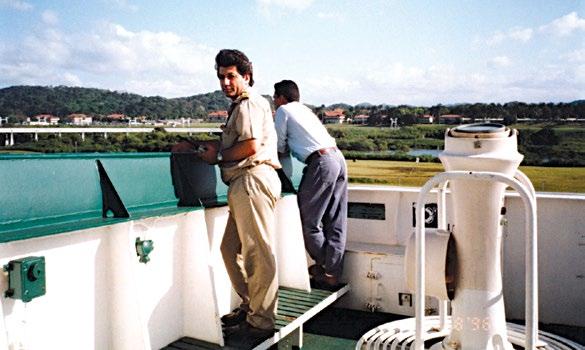
11 minute read
Nostalgia
from Wavelength #72
Welcome to the second installment of “Nostalgia”! We hope you enjoyed the first article and we are looking forward to more fascinating photos from the past that will not only bring back memories and emotions from a different era but also allow you to acknowledge the impressive progress made in all sectors of shipping with the help of technology and with the growth of the Company’s management system. This is a special edition dedicated to our seafarers on board the vessels as this year is the 10th anniversary of the International Day of the Seafarer! It is also special because the Company is proud of a history that now spans four decades of operation. We could not have made it without you, our Seafarers who strive tirelessly to keep up the quality of work on board and maintain the high standards that the Company adheres to!
Let’s begin our trip down memory lane with the photo of this young Captain. I am sure you can recognise him. Yes, it is Captain Michail Michail on board the m/t Leni in January 1996. Leni is carrying out a standard voyage for a vessel of this size: loading gasoline and gasoil from Buenaventura to Cartagena, Colombia (for Charterers Ecopetrol). In this photo she is passing through the Panama Canal in the year Capt. Michail’s daughter was born.
Advertisement
The Leni was a 20k dwt products tanker, built at Korea Shipbuilding & Engineering in 1981, and broken up in 2010 by her final owners.
And below is the Leni P. (Suezmax tanker built in 2011 at Samsung Heavy Industries, Korea), in our current modern fleet of tankers.
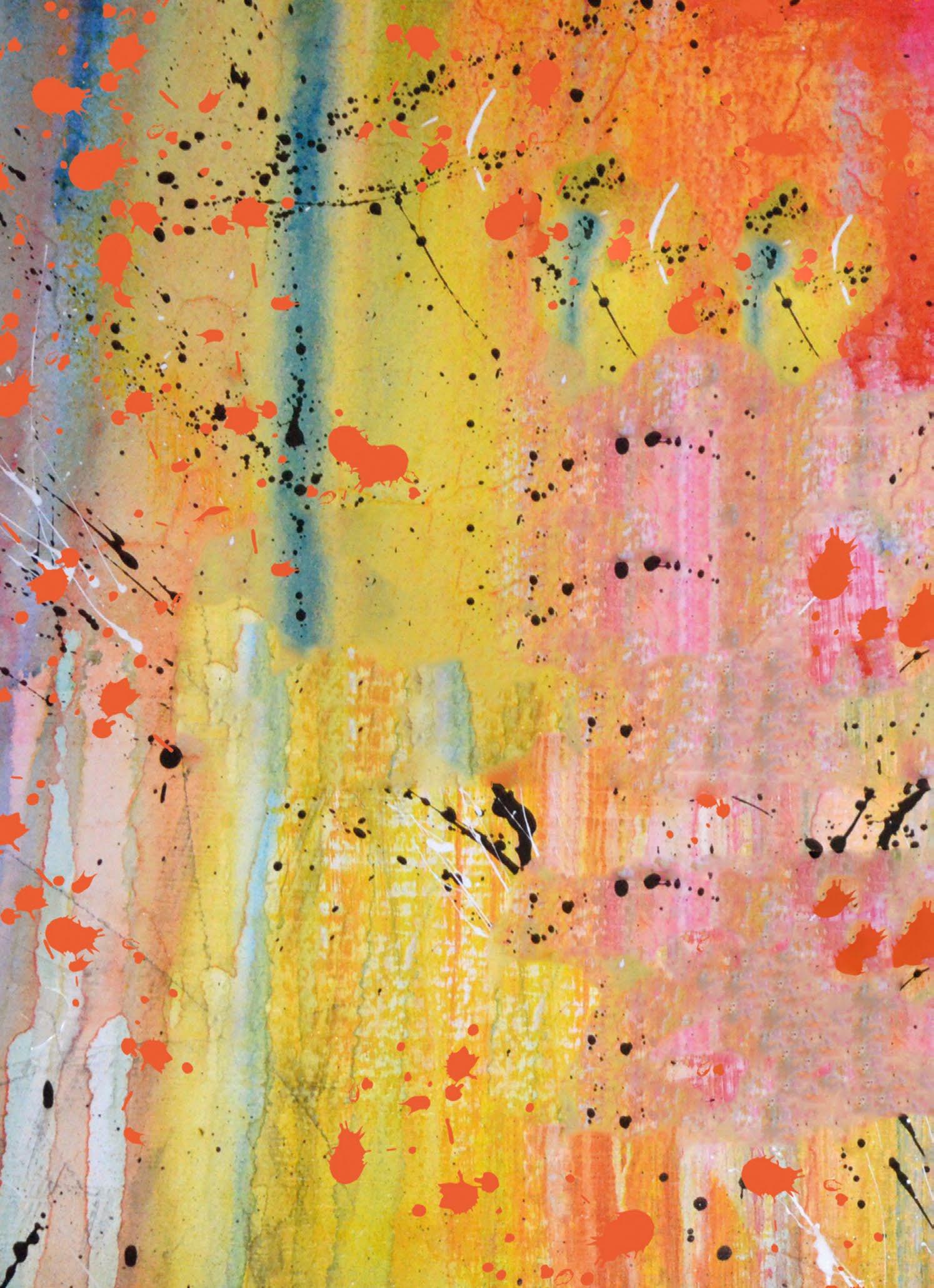
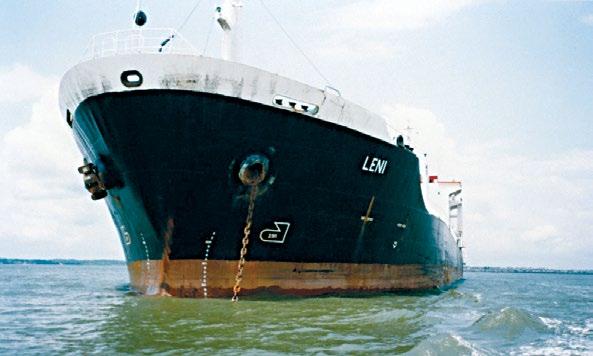
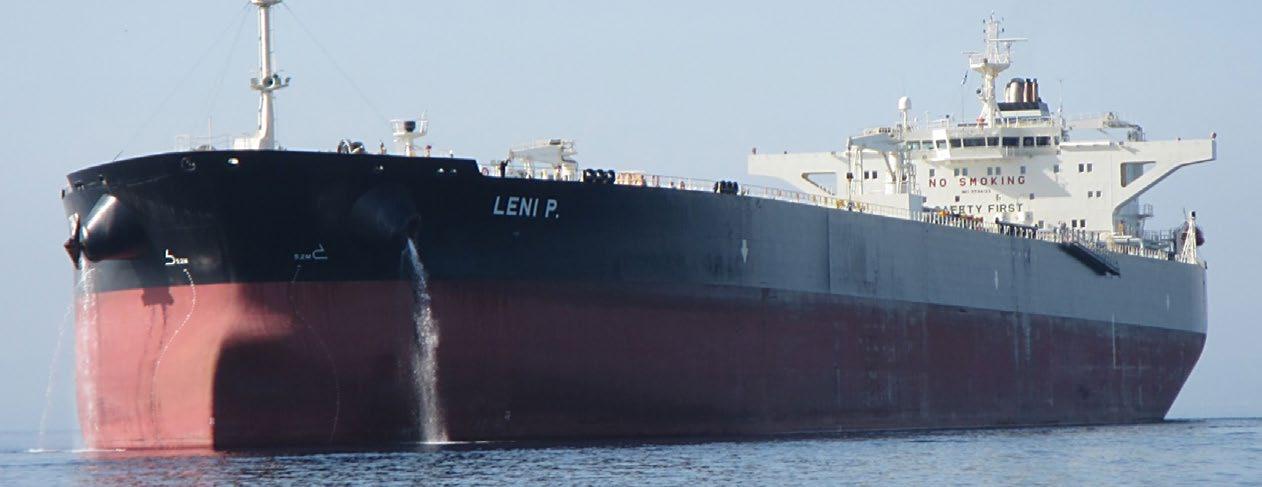
The next two photos were taken in the Engine Control Room. The first (left to right) of Mr. Stratos Palaiologos, Mr. Yannis Tsiachristos and Mr Yannis Vakkas was taken aboard Panagia Armata during a drydocking in Constanta, Romania in September 2013. This photo depicts a normal drydocking day in the Engine Control Room. The second shows Mr. Stratos Palaiologos and Mr. Yannis Tsiachristos studying the machinery and electrical sections of the manuals respectively in order to deal with an issue on board Mikela P. that occurred during sea trials following drydocking at Constanta, Romania in December 2014. The photos illustrate how cooperation and brainstorming are the key to the efficient operation of the vessel!
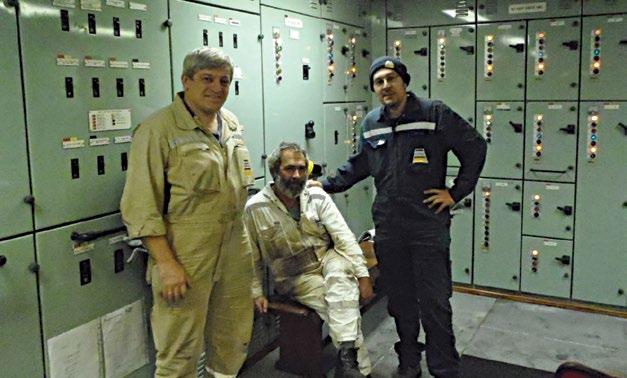
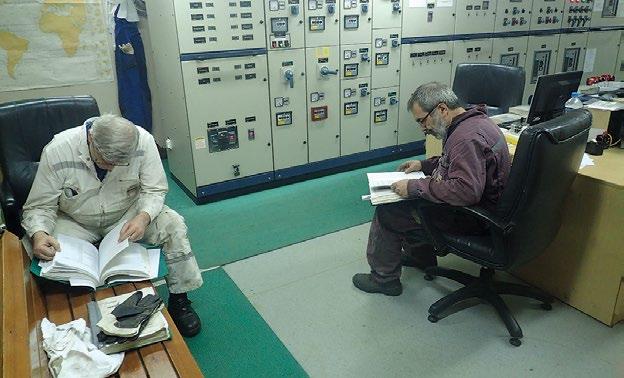
Now, can you guess who the two young Centrofin girls on board the m/t Apanemo at Piraeus in 2003 are? The Apanemo was a 115k coated aframax / LR2 products tanker. The ship was built to a very high standard specification at DSME, Korea and was the company’s fourth newbuilding project at this shipyard. The ship was delivered in 2003 and was operated successfully by the Company until 2006.
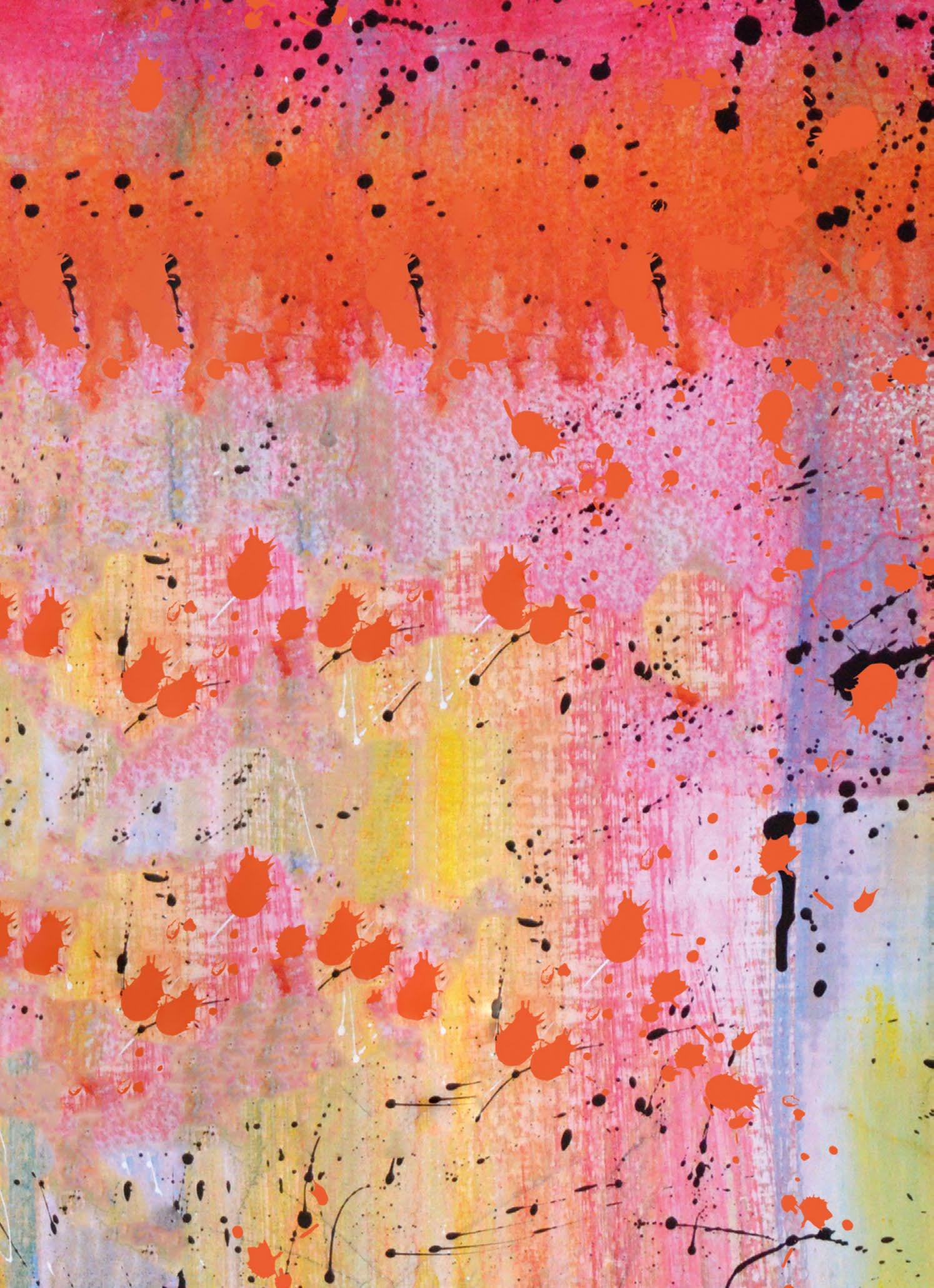
Find the answer on page 19.
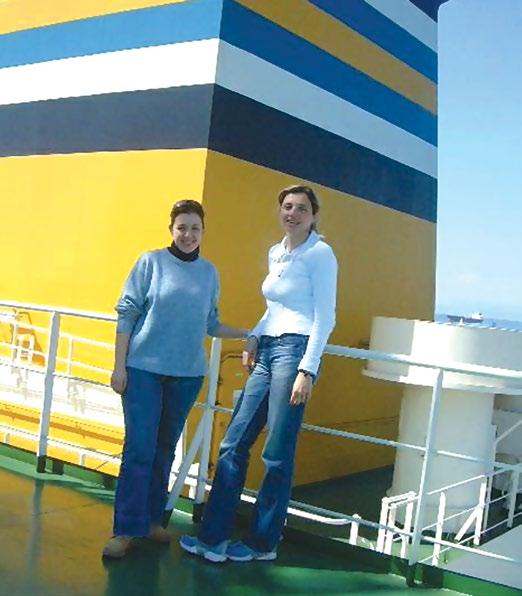
So, another Nostalgia section has come an end. At this point, I would like to remind you to keep sending in your photos of life on board from the old days and general oldies from around the office and other work environments to see if readers can guess who is in the photo. Please send by e-mail to contact@wavelength.gr. And please remember to include the name of the ship, the date, location and the names of any seafarers in the photo (as far as your memory allows you to do so) in order for us to use them for upcoming editions of Wavelength. Finally, I would like to thank all Seafarers on behalf of the Company for their hard work and sustained effort that has helped the Company successfully achieve so many years of operation. I would also like to encourage you to keep up the good work to ensure that our operations continue at the highest standard for many years to come!
Calm seas and safe travels,
Eleftheria Lemontzoglou, Operator
Leopard Takes up Residence in Tanker
The vast majority of stories relating to wildlife reclaiming land during the COVID-19 lockdowns have been debunked, and consequently the title above might seem to be rather far-fetched. However, this particular tale has more than a grain of truth as a leopard did indeed choose a partially dismantled tanker as a site for its lair. The ship in question is the King Kong I, a former floating production, storage and offloading unit that operated in the Democratic Republic of the Congo for the oil and gas producer, Perenco. The big cat was able to gain access to the vessel via the gangway and selected a small, dark, enclosed space for its lair, in which the remains of dogs that the animal preyed on were discovered. Normally, the Navyug yard in Alang, Gujarat is teeming with workers, but due to the lockdown across India, the area was almost silent when the feline arrived, leaving it free to board the ship unnoticed. After around three weeks, though, a sharp-eyed watchman spotted the cat and alerted the authorities. Their response was to set a baited trap on the gangway as entering the animal’s dark lair was deemed far too risky. This plan failed because the big cat ignored the bait, preferring instead to continue hunting local canines. Plan B was, therefore, initiated. This alternative involved darting the animal, placing it under observation and offering it the necessary treatment before releasing it back into the wild. The Rajkot forestry officials’ back-up plan went like clockwork which ultimately resulted in the leopard being back to roam freely further away from humans. While rescues this extreme are uncommon, human-leopard encounters are not that rare in this region as there are, according to the Gujarat forestry department, around 1400 leopards living in the state. Unfortunately, not all encounters end without casualties. On this occasion, though, the authorities dealt with this situation efficiently and effectively by showing tolerance for the leopard, keeping humans safe from the big cat and preventing further losses to the local canine population.
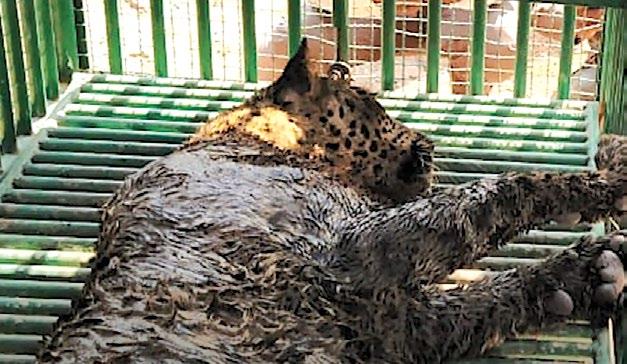
Darted leopard ready for treatment, observation and eventual release.
Sources: www.youtube.com, www.tradewinds.com
Food Culture Golubtsi
Alist of possible ingredients in Ukrainian golubtsi is as follows: cabbage leaves, beef, lamb, pork, turkey, eggs, carrots, mushrooms, olive oil, butter, rice, breadcrumbs barley, dried fruit, nuts, tomatoes, sour cream, legumes, salt, garlic, vinegar and seasoning. Although this list is extensive yet probably not exhaustive, it can allow us to make three conclusions about this wonderful dish. Firstly, it is highly unlikely that no two Ukrainian families who lovingly prepare and cook it share exactly the same recipe. Secondly, the wide variety of fillings indicates that golubtsi was once a means of making use of leftovers during times of hardship. Thirdly, the number of ingredients permits a vegetarian golubtsi to be served. One thing that the list cannot give a clue about, though, is the origins of the dish. These roots of cabbage rolls are widely believed to lie in the Middle East, from where they were taken to Eastern Europe by migrants and traders around 1500 years ago. Since then, this humble cabbage roll dish has found its way into nearly all, if not all, Ukrainian cuisine with a tomato/mushroom broth or sour cream based sauce. As golubtsi has one of the most extensive lists of ingredients of any dish, it can both be adapted to satisfy the most discerning of palates and provide the nutrients necessary for a healthy diet. As such, cooks can prepare the tastiest fillings and sauces comprising all five food groups. What is more, even the humble cabbage leaves provide antioxidants together with vitamins that boost energy. It has been said that a nation’s dish proudly reflects the character of that nation. If this holds true, and there is no evidence to the contrary in this case, then golubtsi surely bears testament to the resilience, flexibility and versatility of the Ukrainian people.

Golubtsi showing delicious filling.
Source: www.ukrainian-recipes.com
Source: www.natashakitchen.com, www.onceuponaparadigm.wordpress.com www.lajollalight.com, www.pearsoned.com
Culture Corner The Ama – Japanese women freedivers
The ama or ama-san, translated as “sea women”, who number around 2000 today have a long history in Japan. First officially recorded during the Heian Period in 927 AD, the ama were mentioned in an anthology of 750 AD called the ‘Man’yoshi’. Since they have not only gained status in a patriarchal society but they have also been deemed responsible for the survival of several coastal towns and villages in Japan. Why freediving was assigned to women is not entirely certain. One theory states that their subcutaneous fat gave them more protection against the cold than men. This may be correct, but this simple explanation detracts from the ama’s resilience and skill as they are able to hold their breath for up to two minutes while gathering seaweed and shellfish even into their 70s, 80s, and in rare cases 90s. Once the seafaring gypsies of the Asian seas, the ancestors of the present-day ama eventually settled on specific islands and adapted their diving to the seasons. As the techniques used and the understanding of the sea’s terrain required specialist knowledge, mothers trained their daughters from when they were as young as ten. There was also support at the “amagoya”, or “ama huts”, where the divers assembled and exchanged ideas during rest periods. An ama’s day begins early. Preparation begins at around 5 am and diving usually begins before 8 am following a request for a good catch and protection from danger. Their white suits and headscarves are also part of their ‘armoury’ against potential risk. The former are believed to keep sharks at bay, while the latter are often adorned with images that are thought to bring luck and ward off any lurking danger. It is not unusual for a mother to dive with her daughter from a fishing boat piloted by her husband. This setup allows the two ama divers to harvest food while the patriarch fishes from the boat, making the whole operation more efficient. An ama dive session lasts for up to 1½ hours, during which time skills are tested to the limit. It is that limit which determines how fruitful the hunt will be. In the abalone season, which lasts from April to mid-September, for example, an experienced diver can make between $400 and $600 in a 90-minute spell. However, no matter how good the ama diver is in harvesting abalone, sea cucumber, wakami seaweed or other marine bounties, it is ultimately the weather that is the deciding factor in how successful the divers are. Although the ama are mainly known for their harvesting of seafood like their South Korean counterparts, they have been linked with pearls since the 1890s. In that decade, Kokichi Mikimoto, who was the first to cultivate pearls, bought oysters from the ama and immediately recognised their potential in the pearl business. He, therefore, set up a team of divers in Toba whose job it was to guard the area where pearls where being cultivated, to assume responsibility for the safekeeping of the oysters once the grain of sand had been seeded in them and to bring the oysters to the surface in order to harvest the pearls. Despite their contribution to Mikimoto’s lucrative global business being well documented, the ama are perhaps not given the credit they deserve for the role they played in the development of the pearl industry. Given the ama’s long history, there have been relatively few changes in their attire. The white suits and goggles were adopted in the 19th century, while neoprene dive suits offering greater thermal protection and scuba masks have been much more recent additions. Other differences concern their emergence as a tourist attraction and their numbers, which have dwindled from 20000 after WWII. Armed with their sharp tools called “isonomi”, they dive for a paying audience that never fails to be captivated by the ama divers’ loud whistle as they exhale then inhale at great speed when they break the surface. The decline in ama numbers has led some to believe that the Japanese women freedivers may soon only exist for the tourist trade. Others, however, take the view that fewer divers equates to less competition and, therefore, a greater chance of securing a decent catch weather permitting. Indeed, there have been signs of a reversal in the trend to move to the city in search of alternative employment with disgruntled migrants returning to coastal settlements in order to reconnect with their ama heritage. Whatever the future holds, it appears that the cultural status of the ama is as resilient as the divers themselves.
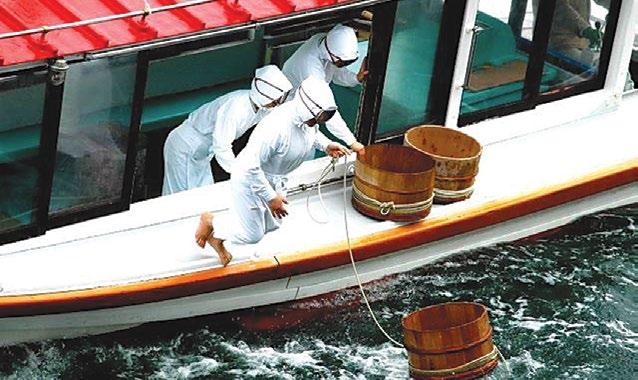
The ama preparing to dive. Source: www.medium.com
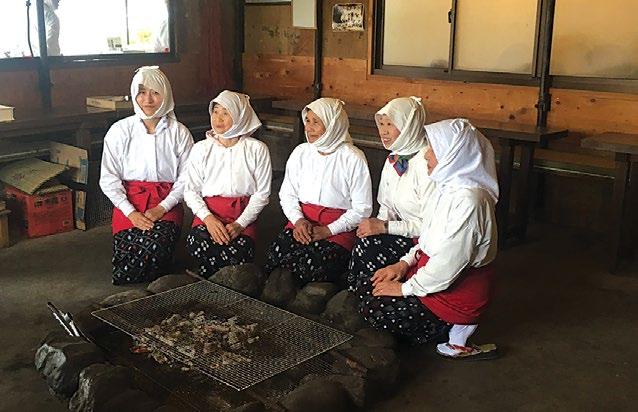
Gathered in the ama hut “amagoya”. Source: www.jyh.or.jp
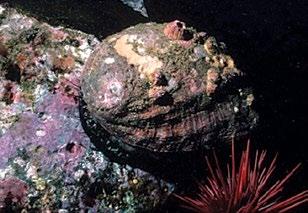
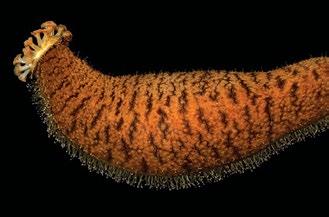
Two of the bounties from the sea that the ama harvest: abalone and sea cucumber. Source: www.wikipedia.org
Source: www.bbc.com/reel, www.medium.com, www.forbes.com, www.ourworld.unu.edu, www.youtube.com, en.wikipedia.org




